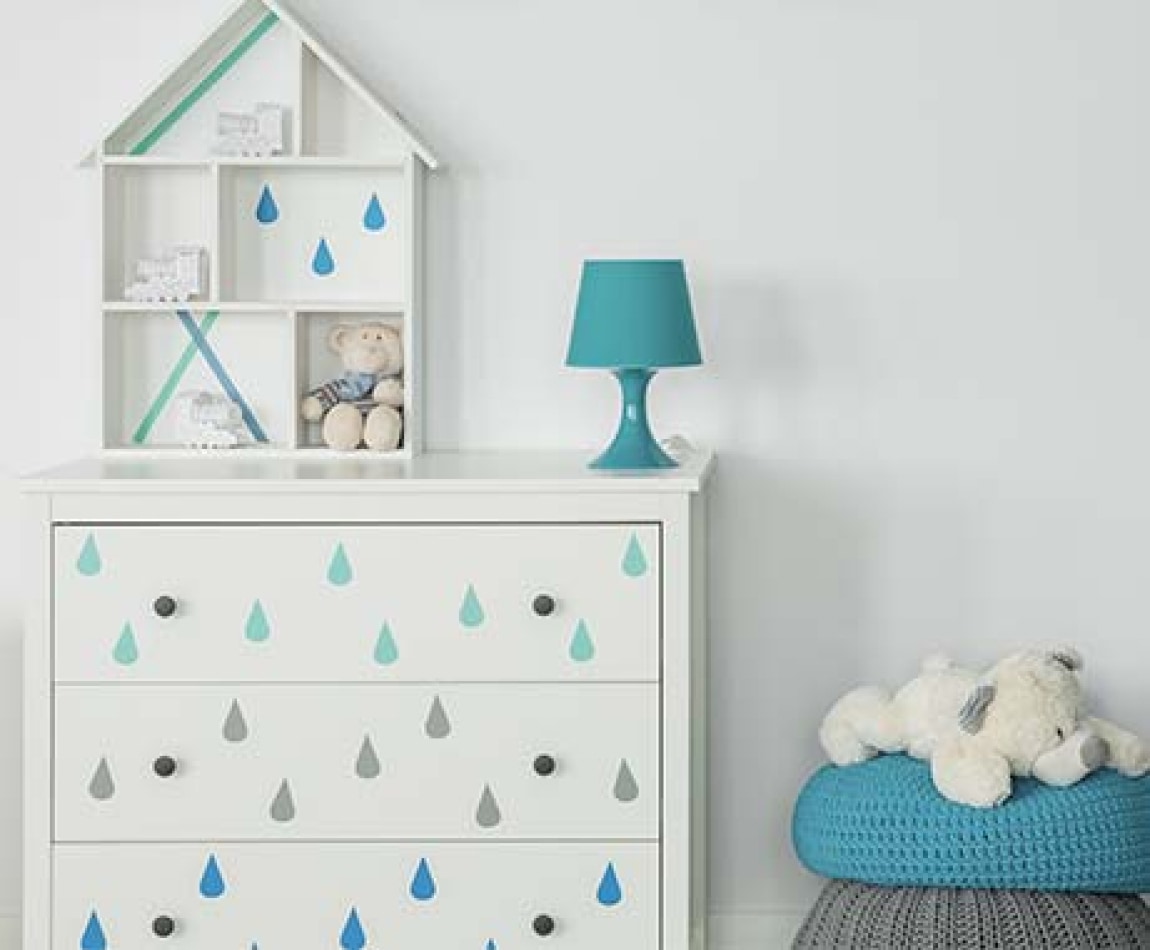
Some people paint flowers, others paint walls. What about furniture? When it comes to painting furniture, there are those who love the idea of breathing new life into old pieces and those who hesitate at the idea of painting over wood. The following is sure to inspire the former and convince the latter!
Finding the right piece
Do you have an old, brown, and outdated item of furniture sitting in the garage or basement? It’s probably seen better days. Yet, under its timeworn varnish are interesting curbs, quality craftsmanship, and good quality wood. Why not breathe new life into it with a few coats of fresh paint? It can’t be any worse than it is now, sad and alone in the garage!

Find inspiration before you start
Flip through magazines, surf design websites such as Pinterest or Houzz, choose a piece of fabric or decorative pillow you like. Inspiration is all around. When you find it, trust it. It will guide you in revamping your furniture. And if you’re not happy with the outcome, there’s always paint stripper!

Choose the new look with care
Now that you’ve decided to save your furniture, you need to decide what look you want it to have. High gloss for glamour? Matt and distressed for a country look? No matter what style you choose, keep in mind the item’s origins. An old Victorian piece is perfect for a glamorous makeover, whereas a piece with cleaner, simpler lines may be better suited to going back to its original roots.

Prepare and paint
This is where it get’s a little tricky. Painting a piece of furniture isn’t difficult, if you’re well prepared. Yet so many people seem to want to rush through the process. For best results, take your time and work with care. Don’t forget that you’ll be looking at your creation every day!
The following steps are essential:
- Clean your piece with a degreaser, such as TSP.
- Sand the surface to roughen it and increase paint adherence, or strip the paint off completely.
- Wipe the entire surface with a damp cloth to remove dust from sanding.
- Apply a coat of latex primer. If you decide to use a chalk paint product, you can skip this step.
- Apply 2 or 3 coats of paint in the colour of your choice.
- Sand lightly with very fine paper between each coat to remove air bubbles and brush fibres.
Dare to be bold
You didn’t like your piece of furniture in its original state, so why hold back now? Take advantage of the opportunity to breathe new life into your pieces – and into your whole decor – with a good burst of colour!
